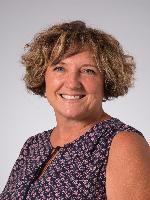
Research papers are a pairing of two 18 minute presentations followed by 18 minutes of Discussion led by a Discussant, with remaining time for Q & A.
This is presentation 2 of 2, scroll down to see more details.
Other presentations in this group:



This research assumes a practical orientation in that human activities are highly situated within the environment in which they are steeped (Grundy, 1987). As applied to this research, the pre-service teachers are associated within both the academic environment in which they have been trained, and the school environment in which they are embedded for student teaching; both of which have an influence on their actions as teachers and learners.
This study used a five phase action research design which helps the researcher to identify the problem, make changes and evaluate it (Ivankova, 2017). An intervention approach was used throughout the study to understand more about how one intervention might make an impact on increased preparedness to teach with technology. The research was conducted in the following phases:
Phase 1: Diagnosing
In the first phase, the problem was explored in existing literature related to teaching with technology in teacher preparation programs.
Phase 2: Reconnaissance (fact finding)
In the second phase, qualitative methods was used to identify what gaps exist between the teacher preparation program’s technology use and the use of technology in partner schools. Specifically, a framework analysis was conducted with existing data sources including: 1.) student teacher work samples (n=132), and 2.) syllabi (n=249). All data was collected from existing artifacts; additional participant data were not used within the data collection.
Phase 3: Planning and Action (intervention)
The data from the work samples and syllabi were reviewed and examined for gaps, depth and application. In phase 3, the intervention occurred which included identifying recommended changes to the work sample to encourage deeper use of technology. The changes to the work sample instructions were implemented prior to the beginning of phase 4.
Phase 4: Evaluating
The evaluation phase will occur after one semester of changes to the work sample to identify if a greater variety and depth of teaching with technology is described by pre-service teachers. At the time of this submission, phase 4 is in progress.
Phase 5: Monitor and Revise
Pre-service teachers application of technology will be monitored in phase 5 to ensure that they are prepared for teaching with technology in their student teaching experience. If improvements are not seen, additional steps related to curriculum, professional development and training will be taken.
This presentation will present the data from phases 1-3, as phase 4 and 5 are on-going as researchers monitor and revise to seek desired improvements.
At the time of this submission, data is being analyzed for presentation. Initial findings indicate that pre-service teachers use Standard 1.1: Empowered Learner (n=40), more than any other standard, and Standard 1.2 Digital Citizen the least of all the standards (n=1). The pre-service teachers described how they used technology for engagement but rarely described how technology was used for learning. In addition, the pre-service teachers described technology use from a teacher-centric perspective, often lacking differentiation between hardware and software use.
This finding contradicts with what was found in the syllabi from the courses in which the pre-service teachers completed prior to student teacher. Syllabi indicate that pre-service teachers learned a variety of content from the ISTE Standards for Educators. This gap indicates that pre-service teachers had experienced technology instruction in their program, yet were unable to articulate how they implemented it. ISTE Standard 2.5a was taught the most (n=45) and ISTE Standard 2.4b was taught the least (n=13).
Early recommendations include modifying the student work sample so that 1.) pre-service teachers identify which ISTE Standards they use, 2.) the instructions are less focused on engagement and more on meaningful use of technology, and 3.) hardware is separated from software so that students are able to identify the tools they use for teaching (many students described the laptop as their teaching tool rather than the software they used for building engaging experiences). In addition, reflections on teaching with technology, and how it might empower students and educators, is being implemented.
It is of great value for teacher educators to identify ways in which we can improve instruction of technology for pre-service teachers so that they are prepared to enter the classroom. Reflecting on our practice as educators by using data-driven methods, is useful to 1.) improving practice and curriculum, 2.) aligning with accreditation standards, and 3. ) preparing students for technology readiness before beginning an immersive instructional experience.
We believe this study is designed in a way that other schools may be able to replicate it to identify their own strengths and weaknesses related to preparing pre-service teachers for their teaching experiences. The action research nature of this study will also help us to identify which strategy is effective in improving the practice of pre-service teachers.
Gomez, F. C., Trespalacios, J., Hsu, Y. C., & Yang, D. (2022). Exploring teachers’ technology integration self-efficacy through the 2017 ISTE Standards. TechTrends, 66(2), 159-171.
Grundy, S. (1987). Curriculum: Product or praxis. The Falmer Press.
Ivankova, N., & Wingo, N. (2018). Applying mixed methods in action research: Methodological potentials and advantages. American Behavioral Scientist, 62(7), 978-997.
Trust, T. (2018). 2017 ISTE standards for educators: From teaching with technology to using technology to empower learners. Journal of Digital Learning in Teacher Education, 34(1), 1-3.
Whalen, J. (2021). K-12 teachers’ experiences and challenges with using technology for emergency remote teaching during the COVID-19 pandemic. Italian Journal of Educational Technology, 29(2), 10-25.